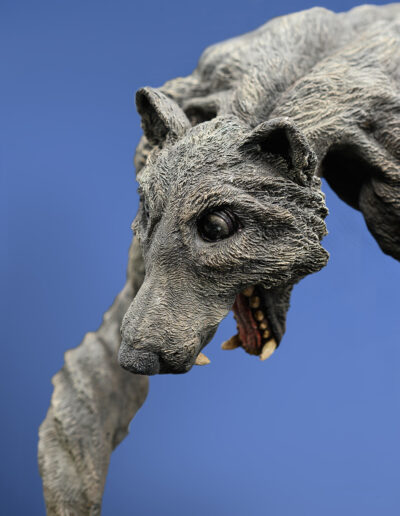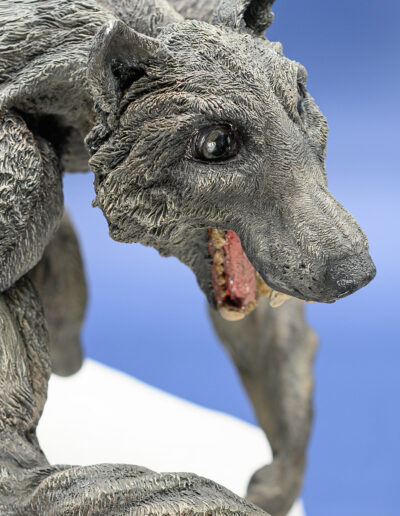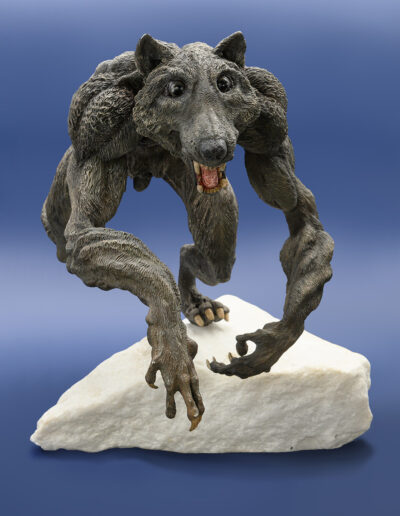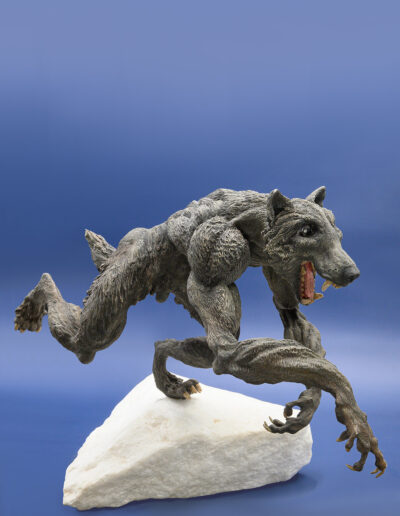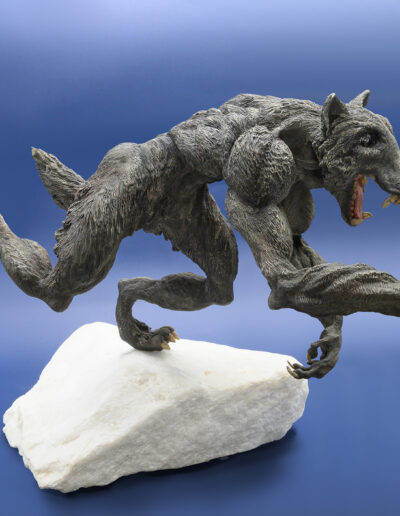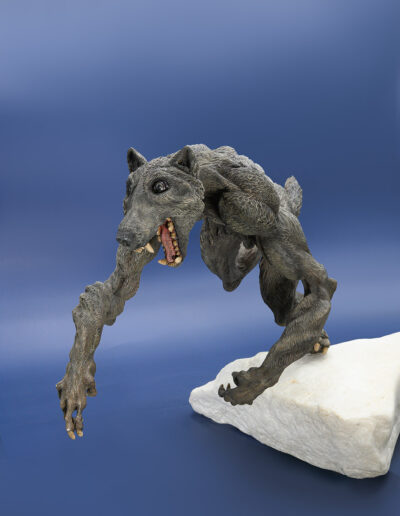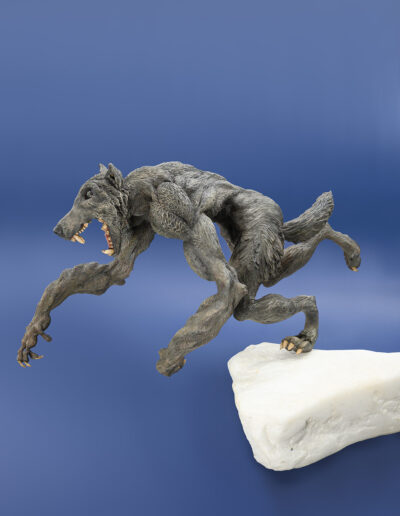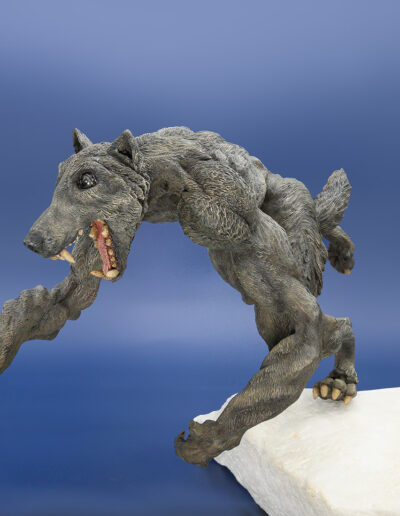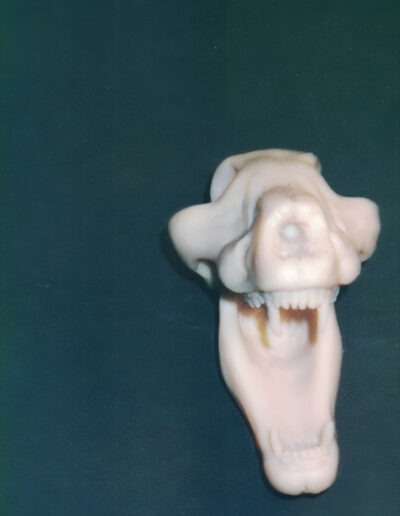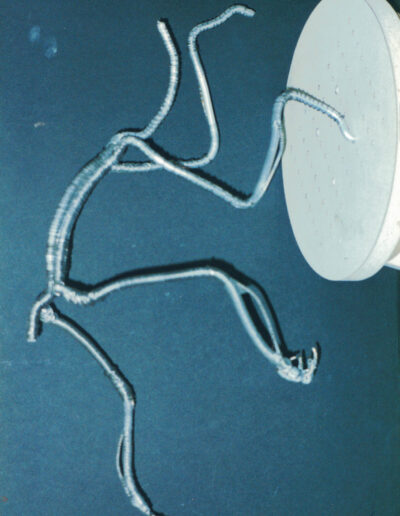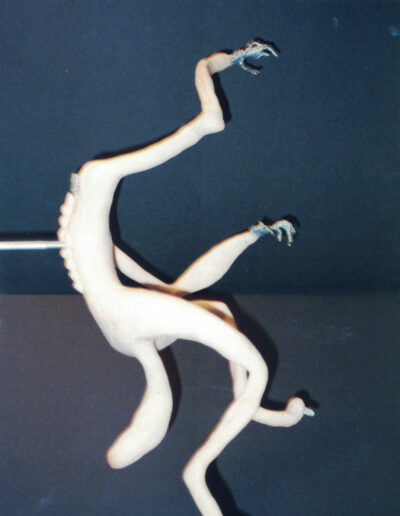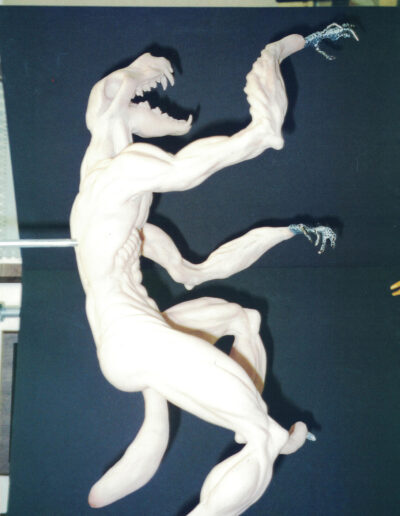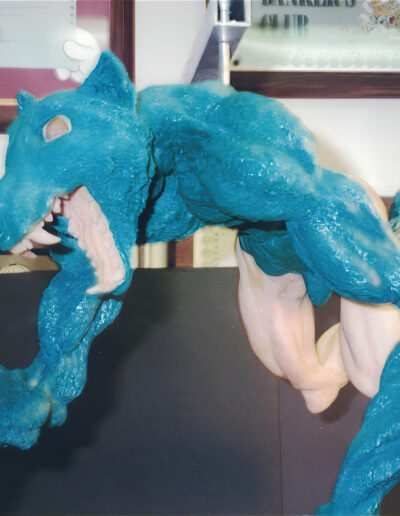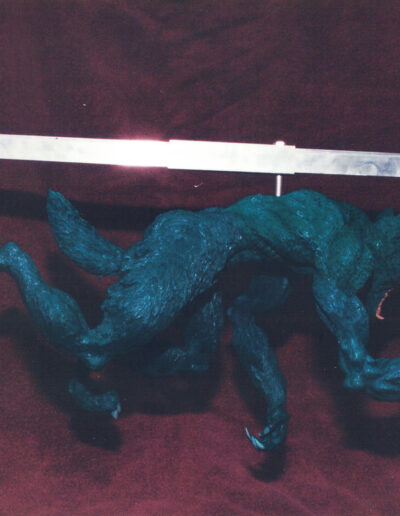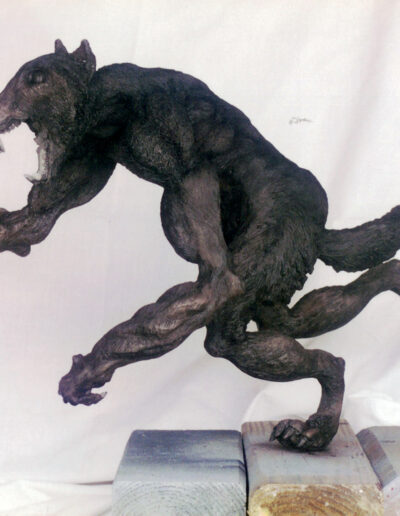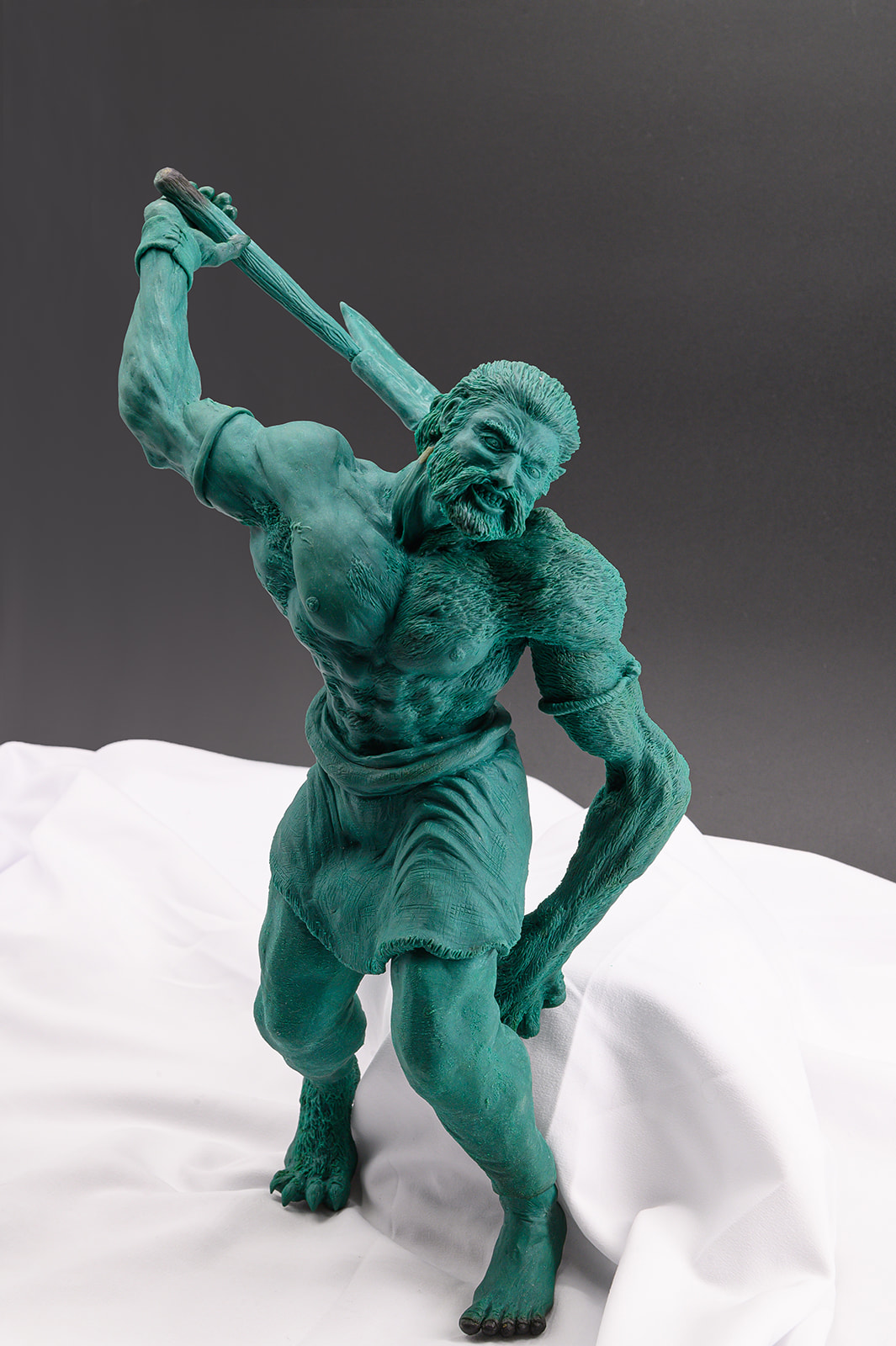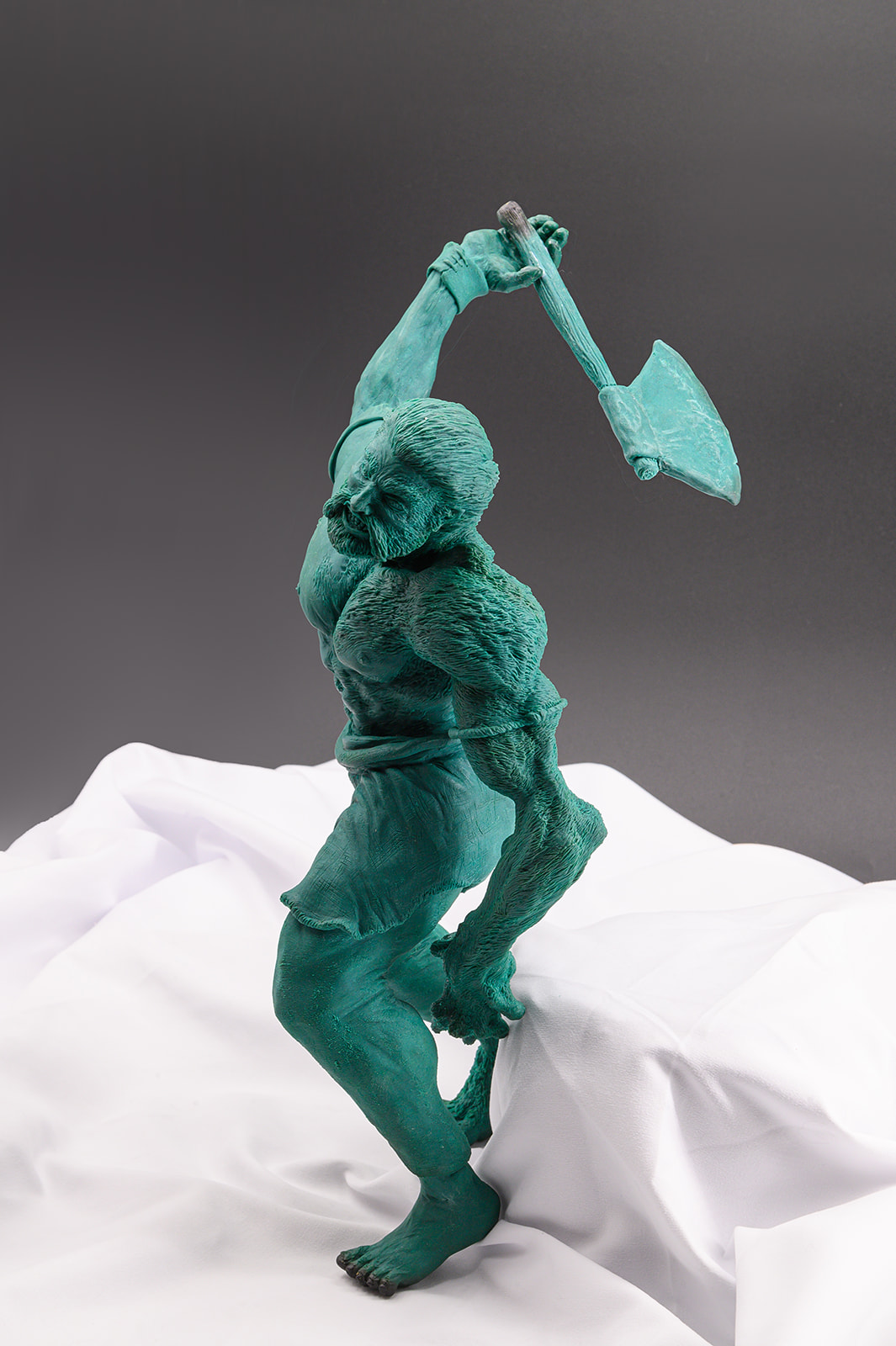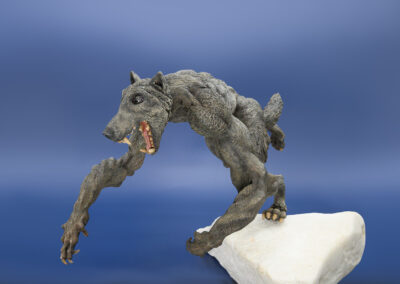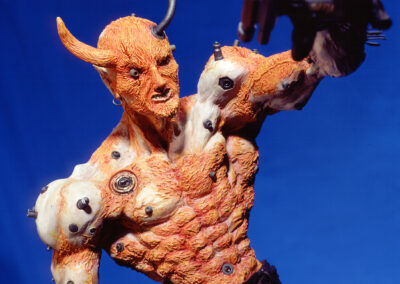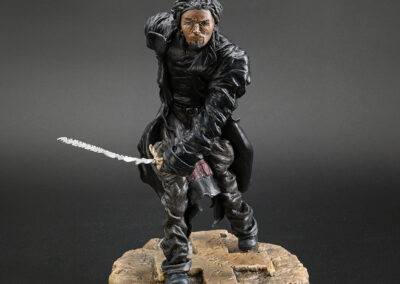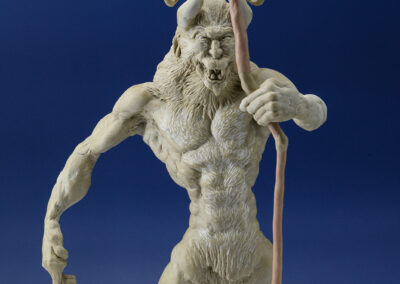Personal IP
Werewolf
Mundi
Behind the Scenes
I didn’t want my werewolf design to look like anyone else’s, so I studied lupine anatomy and looked for unique ways to combine it with that of a human, picking which to defer to when there were real discrepancies and looking for as many ways to blend the two whenever there were similarities. I built a functioning skeleton so the body would be as natural and believable as possible and layered on the different levels of muscles, following the same process of combining the anatomies of each creature, wolf and man. The prototype was painted beautifully by the amazing Dan Colonna.

Werewolf Mundi
Several years ago, I was generating intellectual properties to license for use in comics, books and games and came up with an elaborate story that intermixed werewolf stories and myths from various cultures throughout history. The concept was that since so many disparate people believe in such creatures, their stories, however fantastical, must be rooted in some initial facts. The main protagonist was an antihero named Remus, the “other” twin in the myth of Rome’s founding, who was slain by his cowardly twin, Romulus who went on to establish the city –soon to be empire—named after him. In the myth, these bellicose twins, the children of the Roman god of war Mars, were suckled by a she-wolf.
In my story, instead of remaining dead—I mean, what good is it being a demigod if you just go down from a stab in the back—Remus rises again and lives on as a lycanthrope thanks to his foster mother having fed him when he was a baby. He isn’t a happy camper, who would be after being stabbed in the back by your twin, and devotes his time to tearing down empires, starting with Rome. Which he manages to do by helping the barbarians who sack the western capital, aided by Fenrir, the monstruous wolf of Norse mythology, who in my story can take the shape of a man. So, for those keeping track at home, in my story the first two werewolves are an angry demigod who had a wolf for a wetnurse so he can turn into a giant wolf/man hybrid, and a giant wolf who is perpetually angry, hates nearly everything and everyone who walks on two legs but can masquerade as a man – a really big man.
Work in Progress
The first thing I sculpted was the skull, which served as inspiration for the rest of the piece and focused the image in my mind—what’s this guy really going to look like? Although he has claws and a powerful body, the jaws and teeth should be the scariest part and the eyes should be what initially capture your attention. It’s hard to imagine an expression when you’re looking at a skull, but the gesture is there. How wide that mouth is gaping, how giant those teeth look—you start to wonder if he could even close his mouth. Yes, he can, I checked.
Although I had a great deal of freedom regarding proportions because I was making up the anatomy—and all the rules that would support this structural concept—it still had to be a functioning body, so the design of the skeleton was the basis for everything that came afterwards. I wanted the final beast to have a very stylized, mythical appearance but still seem like something that could be real, so deciding how wide joints would be or how long its bones should be to be optimally practical was critical. The skeleton dictated where the muscle insertions were, how big they were and how they worked with and against one another.
The surface textures—hair and lots of it—was a lot of (time-consuming) fun. I gave him two coats of fur, just as wolves have, with a smoother inner, wooly layer under a coarse, more sharply delineated outer coat. The hairs generally follow a uniform direction, but they flow along the lines dictated by the muscles.
The Painting Process
In the hands of an inexperienced painter, Remus would be a monochromatic blob, but Dan went to work with his airbrush laying in nuanced layers, building them up in interesting gradients to create variety and make it more realistic. The final, time-consuming definition of the individual hairs is a testament to his brushwork. Where most painters would have dry-brushed a highlight color on all the raised details, Dan analyzed how light would have read on the various areas and individually edge-highlighted the hairs with a range of tones.
st painters would have dry-brushed a highlight color on all the raised details, Dan analyzed how light would have read on the various areas and individually edge-highlighted the hairs with a range of tones.
Fenrir & Wolf Druid
I sculpted some other quick pieces to expand the worldbuilding, including one of Fenrir transforming from berserker into a werewolf, as well as a werewolf druid.
View Collection
Let’s make something amazing together
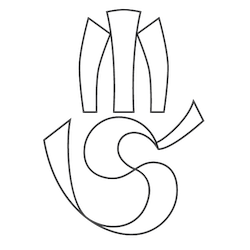 Please note, all Manifest Sculpt work is completed with traditional sculpting techniques—modelling and carving—rather than through modern digital techniques and programs. Consequently, the resin and bronze castings in this edition were also produced through traditional mold making and manufacturing processes. Final Manifest Sculpt commissions are available in a variety of materials, but they are not 3D printed and are not available as printable files. Copyright Notice: all work, including ideation, concepts, stories and their development, character design and production are the property of Carlos Soca unless otherwise noted, and all rights are reserved. Should you wish to discuss collaboration or licensing of an intellectual property or its design, please contact Manifest Sculpt.
Please note, all Manifest Sculpt work is completed with traditional sculpting techniques—modelling and carving—rather than through modern digital techniques and programs. Consequently, the resin and bronze castings in this edition were also produced through traditional mold making and manufacturing processes. Final Manifest Sculpt commissions are available in a variety of materials, but they are not 3D printed and are not available as printable files. Copyright Notice: all work, including ideation, concepts, stories and their development, character design and production are the property of Carlos Soca unless otherwise noted, and all rights are reserved. Should you wish to discuss collaboration or licensing of an intellectual property or its design, please contact Manifest Sculpt.

